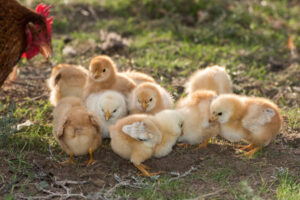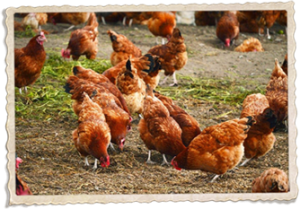When you start raising chicks, you want to keep them safe and healthy. Unfortunately, chicks are susceptible to accidents. It’s all too easy for them to get injured, sometimes seriously so. Thankfully, you can take steps to prevent these injuries and, if they do occur, treat them. Here, we go through some of the most common chick injuries so you know how to prepare for them:
Crooked Toes
Crooked toes are exactly as they sound—a bent toe that can range from a cosmetic issue to a debilitating one. These injuries are typically noticed when a chick hatches. That’s because crooked toes are often caused by mishaps that occur while they’re still in their egg. This includes incorrect incubation temperatures, egg mishandling, and improper egg storage.
How to Treat Crooked Toes: Create a chick bootie, or a brace, out of toothpicks, a pencil, and a vet wrap with 24 hours of hatching. This will help straighten and secure the toe.
How to Prevent Crooked Toes: Since a crooked toe is usually caused my mishaps occurred during incubation, make sure you are taking proper care of the eggs. Keep them at the appropriate temperature and environment and handle them with care.
Spraddle Leg
Spraddle leg, also known as splayed leg, causes a chick’s legs to splay out to the sides. As a result, instead of walking, they’ll scoot along the ground. It can be caused by lack of moisture during incubation or a slick floor in the brooder that causes their legs to splay out.
How to Treat Spraddle Leg: Similar to crooked toe, you can use household items to treat spraddle leg. Use a small hair tie and a half-inch plastic straw to straighten the chick’s legs. Some cases may need the help of a veterinarian.
How to Prevent Spraddle Leg: Keep the environment where your eggs are incubating well moisturized. When your chicks hatch, ensure that the floor in the brooder is not too slick by using the correct liner. Never use flat newspapers, as these are slick and will cause your chicks’ legs to splay out.
Scissor Beak
If you notice your chick’s top and lower beaks do not meet correctly, then they likely have a case of scissor beak, also known as cross beak. A chicken can survive with scissor beak, but they will need a little extra help.
How to Treat Scissor Beak: There is no real cure for scissor beak. The best you can do is support your chick by providing them with the correct feed. Chickens with scissor beak cannot eat pellet feed, so opt for layer mash with a bit of water to help them scoop up their feed. You should also elevate their waterers to make it easier to drink and add a brick to your coop and run to help chickens wear down their beaks.
How to Prevent Scissor Beak: Since scissor beak is caused by genetics, there isn’t much you can do to prevent it. Simply support your chicken using the steps laid out above to let them live a long and happy life.
Wounds
Chicks can get wounds from a variety of places. Perhaps you accidentally dropped one of your chicks, or your chick got pecked by another chick. Accidents can happen even in the brooder, so it’s important to take extra precautions with your chicks.
How to Treat Wounds: Wounds vary. Some chicks will get a broken bone, while others could get a cut on their side. It’s important to take your chick to the vet if they have suffered from any type of wound. That way, it will get properly cleaned and treated.
How to Prevent Wounds: Ensure that you handle your chicks carefully by cupping them gently and not squeezing them. Then, make sure there is nothing in the brooder that could cut or harm your chicks.
Are you looking to start your own backyard flock? Chickens for Backyards is here to help. Look through our available breeds or give us a call with any questions you may have.

